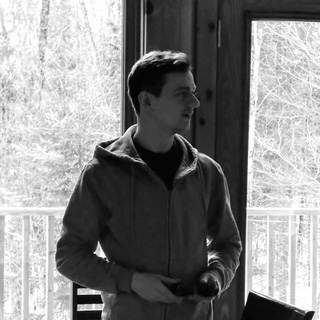Loganathan Perumal is a Senior FX artist, with a crowd flavor. He is among the first users of Golaem in production, having done some shots with Golaem 2, back in 2012! Today, he shares his experience about being a Crowd Artist and the evolution of crowds in VFX & Animation.
How did you become a crowd artist?
It was a long journey from computer faculty to graphic designer to crowd artist. First, I worked for Technicolor A&G as a FX artist. I had the opportunity to work on swarming bots crowds for a Marvel Super Heroes 4D film for Madame Tussauds, London. It was my first crowd work using Maya particle instancer. I found it fascinating to use Maya particles and control the crowd cycles and movement using expression. Most of my work was related to particle based FX as well as technical support like workflow, setups, scripts, and render troubleshooting in Maya. Then, I got to work on the fireflies crowds for the Legends of Oz - 3d animation movie within Prana Studios. Later, Sachin Shrestha, our Technology Head suggested to try Golaem. I was so excited when I discovered Golaem relied on the Maya particle system. We used Golaem 2 in the Underdogs movie to create stadium crowds. In Prana studios, I also had the opportunity to work across all the departments from Modeling to Lighting & Rendering in order to set the Golaem crowd workflow.
Could you share a few projects you have worked on?
GOT S5E9 Dragon Arena, King Kong - Skull Island RIDE for Universal, The Boss Baby, Baahubali-2, Thor Ragnarok, Commercials : Nissan Nivara, NIKE-Dream Further, Facebook Oculus-2...
Given your experience in crowds, which trends have you seen emerge over time, and how do you see the future for crowds?
I think, crowd will be unstoppable elements for vfx & 3d animation movies. With the current hardware support and crowd software available on the market, crowds elements become affordable and production friendly to any small scale studios too. We are likely to have an industry standard crowd cache output with USD, which can be used in the different crowd packages and for rendering the crowd. Also real time crowd simulation for VFX movies are becoming a thing.
AI could have more impact on solving complex crowd simulation, understanding environment better, not just only for ground adaption & obstacles but also detecting the environment properties and how to react to it, better interaction with other crowd agents and main fx elements. Also maybe it would be able to generate the FX data within crowd simulation for example volumetric.
How did the Covid crisis affect film production and the way you are going to work with crowds?
Initially, we had some down time for a few months when global lockdown happened and shooting stopped due to Covid. But now, it is back to the same amount of work that we are usually getting on commercials. On the other side, the work has increased a lot for film & episodic. There are way more job opportunities for crowd artists now.
Would you recommend CG artists to get in crowds? How? Which skills should they develop?
Yes! Most of the studios are having crowd TDs to do the whole setup. Starting as a shot artist to know how to populate the crowds & simulate on the software will be a good way to get into crowds and will help them to understand the full crowd workflow. Later, they can learn more on the crowd software by preparing the crowd setups. Having additional skills like Character Effects (cloth & hair), Rigging, Mocap, or Lookdev would be an advantage and make the profile stronger for all things related to crowd render, tools development & scripting.
Would you have some advice for people wanting to create a demoreel in order to be hired as crowd td?
I think, for beginners, have one or two shots which are really good, rendered and comped. Playblasts would also be good to show your skills on the software. Have more RnD shots showing how you achieved the different crowd behaviors, but present it the best way, with explanation of what you did. If you have technical background, showing tools you created to automate the crowd work, adding cloth simulation on crowds and crowds with fx interactions would be good too.
Anything else you would like to share?
When I was working on GOT5 with Golaem 3, we didn't have Golaem Layout Tool yet, no Apex cloth simulation yet and nCloth simulation was too expensive. I still remember the days, how we did the project with the insane idea of using Maya blendshapes for cloth simulation on the locomotion crowds of 12 noble & slaves characters. It is really great to see the development of the Golaem Plugin now. Please keep going. By the way, as a crowd artist, I enjoy working with multiple crowd softwares but Golaem is my favourite one. Happy to see the number of people interested to learn Golaem plugin through the Golaem Academy. I really appreciate the Golaem team for taking the initiative to grow more crowd artist.
Want to follow Loganathan's steps and become a Crowd Artist?
Download Golaem PLE & start training yourself with our Youtube Channel




